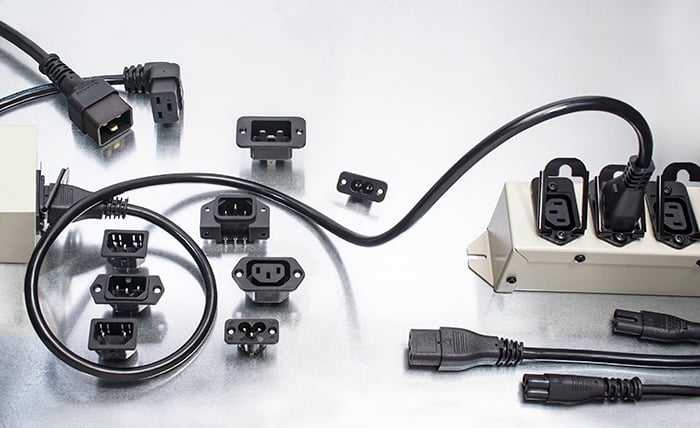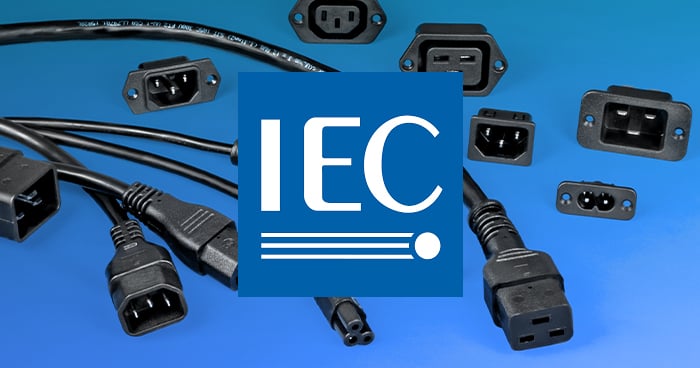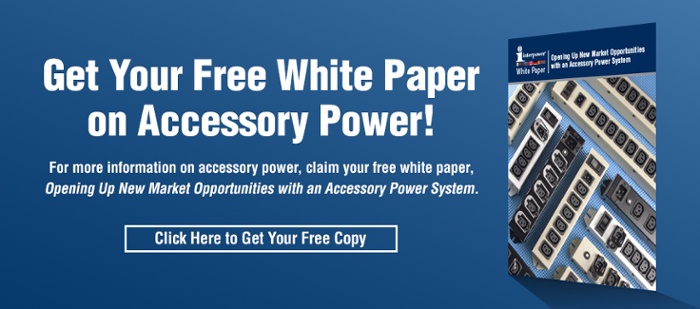The International Electrotechnical Commission—Setting the Standards
Posted on 10/31/25 8:29 AM
What the IEC Does and Doesn’t Do
The International Electrotechnical Commission (IEC), né Commission électrotechnique internationale, is an international standards organization headquartered in Geneva, Switzerland, which writes and publishes international standards. IEC standards have been adopted by a majority of nations worldwide. Unlike safety agencies such as UL or VDE, the IEC does not test or certify its IEC 60320 electrical components—the safety agencies do that. While the standards are not codified or enforced by the IEC, the agencies representing countries worldwide—such as those listed above—can demand compliance from manufacturers to meet IEC standards as written. In Europe alone, 80% of European and electronic standards are IEC standards.
Olde School
Today’s IEC is historically tethered to its precursor, the International Electrical Congress, which first convened in Paris, France, at the Palais de l'Industrie on the Champs-Élysées in 1881 as part of the International Exposition of Electricity—a week the City of Lights lived up to its name. Upwards of 250 attendees of the electrical congress met, in part, to internationalize electrical nomenclature to facilitate harnessing the world’s latest marvel. As for the Exposition of Electricity, exhibitors and attendees had disembarked ships and trains having arrived from the United States, United Kingdom, Germany, France, Italy, and the Netherlands, among other nations. A flurry of technical papers concerning electrical theory were presented, including proposed standardized definitions of units of electrical measurement such as the ampere, ohm and volt.
 Bright Future
Bright Future
Terminology for the units of electricity—such as electromotive force (volt) or the number of electrons passing points in a circuit per second (ampere)—was needed regarding safety limits, e.g., such as not running too high or too low of current, and for concepts such as expanding the distribution of mains power in cities, and that units of electrical measurements held the same value for everyone. This was important for electrical scientists and electrical manufacturing that would follow, but also highlighted the “immortality” of the inventors who championed them: Hertz, Gauss, Kelvin, Watt, Ampere, Coulomb, Ohm—the list of names are extensive. Just as today’s culture celebrates its tech giants, the turn of the 20th century celebrated its inventors and engineers whose names were forever attached to units of electrical measurement.
The advent of electricity and the subsequent years after is often referred to as the second industrial revolution (1860-1920). In the early 1900s, hundreds if not thousands of assembly lines would start rolling out mass produced sockets, switches, bulbs, copper wire and eventually power lines and power cords at various points along the electrical timeline—unlimited possibilities to light up the dark while making everyday life more convenient. Incredibly, the leaders of this new industrial revolution communicated by telegram, hand-written letters, and read out-of-date newspapers; they toiled over experiments using candlelight and oil lamps. There were no electronic calculators, no e-mails or text messages, no AI, and no online classrooms or YouTube channels.
However they imagined their eventual place in history at that time, the legacy they would leave behind would be a safer one than when they had started, one that could slow down or speed up the flow of electricity; it would manipulate switches, resistors and capacitors to begin controlling this awesome new power that would change how people lived in nearly every aspect of their lives.
There were subsequent meetings of the former International Electrical Congress: Chicago, 1893; Paris, 1900; St. Louis, 1904. And yet there were numerous electrical conferences and other international congresses held contemporarily as well: Paris, 1882, 1884, 1889; Frankfurt, 1891; Edinburgh 1892; Geneva, 1896; London, 1908; Turin, 1911, and having survived its great earthquake, the rebuilt city of San Francisco was scheduled to host in 1915 but was cancelled due to WWI. However, U.S. electrical luminaries have worked alongside their European peers for two centuries, including Michael Faraday, Nikola Tesla, Henry Carhart, and Thomas Edison among them.
Today’s IEC
Founded in 1906, the International Electrotechnical Commission (IEC) was an extension of the former International Electrical Congress. The new IEC opened its doors in London, England, and held its first meeting at Hotel Cecil on June 26, 1906, with Alexander Siemens presiding as its chairman. To its credit, the new IEC never looked back, due in part to its European roots. In November of 1993, the European Union was founded and those roots grew even deeper.
Beyond Bureaucracy—Electrical LEGOs
The IEC continues to create and update electrical standards, as do safety agencies. However, anyone who’s read through a standard knows that while they’re informative and essential, they can make for very dry reading—even for bureaucrats. What isn’t dry is the electric accessory power system components in which the IEC wrote its standards for, enabling manufacturers to deploy international electrical designs on any continent by using only one country-specific cord set plugged into the mains power.
Once adding an Interpower® accessory power strip with 4-12 outlets to your country-specific cord, now your design is ready for IEC connectors, plug connectors, inlets, outlets (IEC 60320 Appliance and Interconnection Couplers), and jumper cords to build one complete design powering up to 12 machines or devices. Add popular IEC 60320 Sheet F or Sheet J outlets, and one IEC 60320 C14 or C20 inlet, and now you can break out 12 jumper cords from the APS to power multiple devices. Popular jumper cord options begins with either a Sheet E or Sheet I on one end and a C13 or C19 connector on the opposite end to plug into machines. That’s it. While plug and socket patterns are numerous worldwide, IEC 60320 components make it easy to unbox cord sets and plug them in right away without any reconfiguration.

And that’s the current IEC’s legacy: how to build electrical components for exportation and convenience using only one country-specific cord set with one APS, and several IEC 60320 components. Now you’re ready to roll.
Topics: Accessory Power






